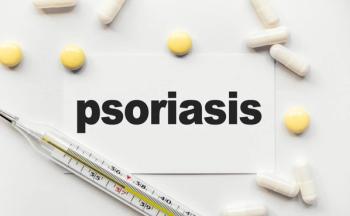
Managing Bleeding Disorders in Pregnancy Requires Early Diagnosis, Multidisciplinary Care
A recent review details strategies for mitigating the risks faced by pregnant patients with hemophilia or von Willebrand disease and their children.
Pregnant patients with inherited bleeding disorders face an elevated risk of life-threatening bleeding during pregnancy, delivery, and the postpartum period, making the identification and management of these disorders crucial to the mother and newborn’s health. A recent
Although healthy women experience changes to the hemostatic system throughout pregnancy, childbirth, and the postpartum period that support coagulation to minimize bleeding, these changes might not fully protect patients with hemophilia or VWD. Understanding the inheritance patterns of bleeding disorders and being aware of normal levels of procoagulant and anticoagulant factors in newborns is another key aspect of management.
Hemophilia is characterized by low levels of coagulant factors VIII or IX, and factor VIII in particular increases throughout pregnancy. Although the increase is normally sufficient in healthy women, the increase is inconsistent between women with hemophilia and may not be enough to prevent postpartum bleeding. Treatment by a multidisciplinary team at a care center affiliated with a hemophilia treatment center (HTC) is the ideal scenario for this patient group to reduce the risk of complications. Contextual information about the mother’s family and prepregnancy counseling on the potential for genetic transmission would ideally be in place at the HTC.
To assure sufficient levels of coagulant factors are present at delivery, factor levels should be checked early in pregnancy and at least at 28 to 34 weeks of pregnancy. Desmopressin (DDAVP) or factor replacement therapy is recommended for patients whose factor levels are lower than 50% by week 34 of pregnancy, although factor replacement is the first choice if needed due to the potential risk of neonatal or maternal hyponatremia with DDAVP. The factor level target should be 100% to 150%.
Determining the gender of the fetus is also important, as males carry a 50% risk of inheriting the disease and being at risk of neonatal bleeding while females have a 50% chance of being carriers with mildly low factor levels and little risk of neonatal bleeding. Chorionic villus sampling (CVS) or amniocentesis to evaluate fetal DNA is suggested for mothers of male fetuses. At birth, intracranial hemorrhage is the greatest concern for a newborn with hemophilia.
VWD is a more heterogeneous condition than hemophilia, although some management aspects are similar. During pregnancy, von Willebrand factor (VWF) levels increase to mitigate bleeding at delivery, but there is significant variation in VWF levels in expectant mothers with VWD. Those with type 1 VWD tend to show bleeding profile improvement throughout pregnancy as factor levels increase. Those with type 2 VWD show an increase in defective endogenous VWF, but not in VW activity. In women with type 3 VWD, the most severe form, both VWF and factor VIII typically remain low during pregnancy. Factor replacement therapy can help compensate for the lack of natural factor level increases.
As in hemophilia, target factor levels should be a minimum of 50%, targeting 100% to 150% at delivery. Factor replacement therapy with VWF containing plasma-derived factor VIII concentrate has been the most used intervention, although recombinant VWF may be more effective, the study authors note. To manage the risk of postpartum hemorrhage, prophylaxis with antifibrinolytics is recommended, and postpartum tranexamic acid is recommended when the patient’s bleeding score is high or there is a history of postpartum hemorrhage. As with hemophilia, DDAVP is another treatment option but carries concerns of maternal hyponatremia.
With hemophilia and VWD, the safety of neuraxial anesthesia has been called into question. Although it is still debated, experts agree that it should not be administered when factor activity is below 50%. In newborns, the greatest concern regarding bleeding complications is for those with type 2 or 3 VWD.
Overall, the review emphasizes the importance of early and accurate diagnosis of bleeding disorders in pregnant women and the fetuses they carry. Additionally, appropriate treatment for insufficient factor levels is crucial to uneventful pregnancy and birth. Treatment by a multidisciplinary care team and ideally involving an HTC are both key to improving the likelihood of a safe delivery for mothers and newborns.
Reference
Janbain M, Kouides P. Managing pregnant women with hemophilia and von Willebrand disease: How do we provide optimum care and prevent complications? Int J Womens Health. 2022;14:1307-1313. doi:10.2147/IJWH.S273043
Newsletter
Stay ahead of policy, cost, and value—subscribe to AJMC for expert insights at the intersection of clinical care and health economics.






































